31. Pagan. INTP. NueroDivergent. Retro Technology Aficionado. Elder Millennial. Moderna Labrat. He/TheyI learned how to solder and now I regret everything.
Don't wanna be here? Send us removal request.
Photo

(via d75668383a20e4876a184f21592ebce2.jpg (735×490))
24 notes
·
View notes
Photo
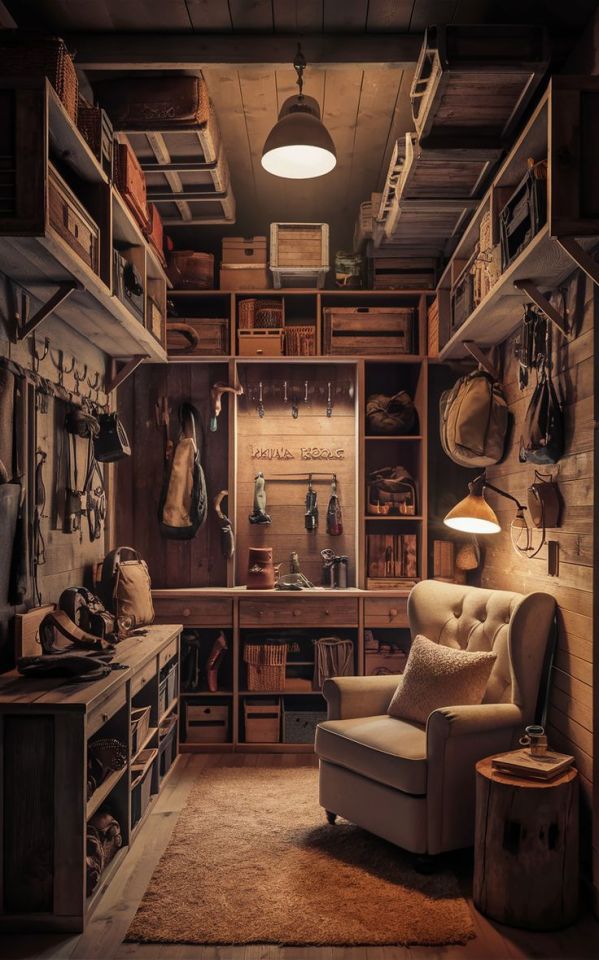
(via 0139205b18fdb3a3b39582a2078e3aa2.jpg (736×1180))
213 notes
·
View notes
Photo
Goals, honestly.

(via 62f107ee70e6c9db00ece38267cd336d.jpg (720×897))
986 notes
·
View notes
Text
god i hate you mpv i hate you i hate you i hate you im the better media player you stupid piece of shit h ate you hi ate you aouggh
138 notes
·
View notes
Text

The library of Celsius, Ephesus, Turkey
The library of Celsius is considered one of the most beautiful surviving structures of the time of Roman Empire. The Library was built from 114-117 AD. It was capable of storing 12,000 scrolls, making it the third largest library in the ancient world, behind Alexandria and Pergamum.
It was named after Tiberius Julius Celsus Polemaeanus, a Greek Roman citizen who served as a senator of the Roman Empire and was a consul in Rome in 92 AD, governing the Asian province.
His son, Gaius Julius Aquila, constructed the library as a tribute to his father, and Celsus was allowed to be burried in a sarcophagus beneath the ground floor of the building honoring him and his contributions to the political and cultural life of Ephesus, which was one of the most important cities in the Roman Empire at the time.
1000libraries Photography
173 notes
·
View notes
Text























Пещера Деветашка считается одной из самых крупных в Болгарии и всей Европе. Она расположена на реке Осым, между селами Деветаки и Дойренци (Ловечская область). Пещера обнаружена лишь в 1921 году, а с 1996 года является охраняемым памятником природы. Ее протяженность составляет около 1,5 км, а входом служит гигантский проем 55 м в ширину и 35 м в высоту.
Пещера Деветашка поражает воображение туристов. Ее потолки высотой от 60 до 100 метров имеют многочисленные провалы, которые местные жители называют окнами. Они создают естественное освещение, но практически не нагревают пещеру. Поэтому здесь прохладно даже в знойные летние дни. Внутри протекает река, есть подземные озера, водопады, сталагмиты и сталактиты. В залах обитают летучие мыши, поэтому они закрыты с 1 ноября по 1 апреля, чтобы не мешать размножению животных.
В пещере обнаружены следы обитания древнего человека. Согласно археологическим исследованиям пещера служила убежищем людям с поздней палеолитической эпохи. Археологические раскопки обнаружили остатки из культурного слоя почти всех доисторических периодов. Рельефный слой толщиной от 0,3 до 5,5 м содержит остатки поселений разных эпох: палеолита(кремневые орудия мустьерских форм, позднепалеолитические изделия из кремня и костей); неолита (очаги с каменной основой, узкие каменные топоры, кремневые заточки и скребки, костяные лощила, шила и долота, керамику с резьбленными надписями); энеолита ( разрушенные жилища, печи, зернотерки,орудия из камня и костей, посуда с резной, рельефной и другой орнаментацией, антропоморфные фигуры); бронзового века (боевые топоры из бронзы, темнолощённые керамические изделия); железного века (бронзовые ножи, железное оружие).
Вторая мировая война оставила и здесь свой след. Во времена социализма пещера использовалась в качестве склада боеприпасов на случай военных действий, а также служила хранилищем нефтепродуктов. В пещере до сих пор остались следы в виде кругов с тех времен.
Немаловажной частью этого чудного места является разнообразие представителей фауны. В пещере обитают более сотни различных видов живности, некоторые из которых даже занесены в Красную книгу! В их числе 12 видов охраняемых земноводных (эскулап, полоз, тритон, древесные лягушки, черепахи Германа), около 80-ти видов птиц, 34 вида млекопитающих и 15 видов летучих мышей.
Devetashka Cave is considered one of the largest in Bulgaria and throughout Europe. It is located on the Osam River, between the villages of Devetaki and Doirentsi (Lovech region). The cave was discovered only in 1921, and since 1996 it has been a protected natural monument. Its length is about 1.5 km, and the entrance is a gigantic opening 55 m wide and 35 m high.
Devetashka Cave amazes tourists. Its ceilings range from 60 to 100 meters high and have numerous gaps, which locals call windows. They create natural light, but practically do not heat the cave. Therefore, it is cool here even on hot summer days. A river flows inside, there are underground lakes, waterfalls, stalagmites and stalactites. The halls are inhabited by bats, so they are closed from November 1 to April 1, so as not to interfere with the breeding of animals.
Traces of ancient human habitation were found in the cave. According to archaeological research, the cave has served as a shelter for people since the late Paleolithic era. Archaeological excavations have discovered remains from the cultural layer of almost all prehistoric periods. The relief layer, 0.3 to 5.5 m thick, contains the remains of settlements from different eras: Paleolithic (flint tools of Mousterian forms, Late Paleolithic objects made of flint and bones); Neolithic (hearths with a stone base, narrow stone axes, flint sharpenings and scrapers, bone polishes, awls and chisels, ceramics with carved inscriptions); Eneolithic (destroyed dwellings, ovens, grain grinders, tools made of stone and bones, dishes with carved, relief and other ornamentation, anthropomorphic figures); Bronze Age (battle axes made of bronze, dark-polished ceramics); Iron Age (bronze knives, iron weapons).
The Second World War left its mark here too. During socialism, the cave was used as an ammunition depot in case of hostilities, and also served as a storage facility for petroleum products. There are still traces in the cave in the form of circles from those times.
An important part of this wonderful place is the diversity of fauna. The cave is home to more than a hundred different species of living creatures, some of which are even listed in the Red Book! These include 12 species of protected amphibians (aesculapius, snake, newt, tree frogs, Hermann's tortoises), about 80 species of birds, 34 species of mammals and 15 species of bats.
Источник:/bulgariaexpert.ru/info/peschera-devetashka.php, /www. ntabulgaria.ru/blog/interesnye-mesta/peshhera-devetashka/, juicyworld.org/devetashka-cave/,/volimo-balkan.livejournal .com /450004.html,//meteo.by/around/c288c52491142c32.html, //www. tripadvisor.ru/Attraction_Review-g14037230-d4184576-Reviews-Devetashka_Cave-Devetaki_Lovech_Province.html,/bolgarskiydom .com/devetashka/.
275 notes
·
View notes
Text



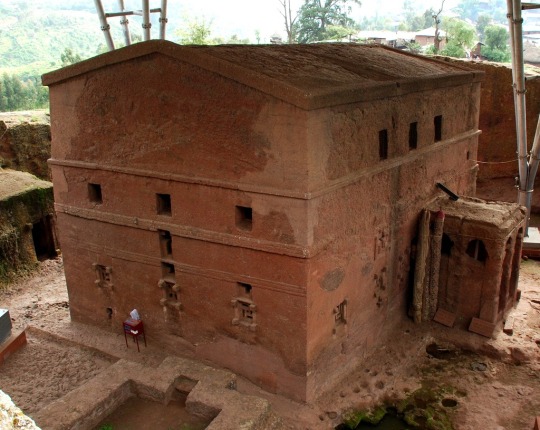



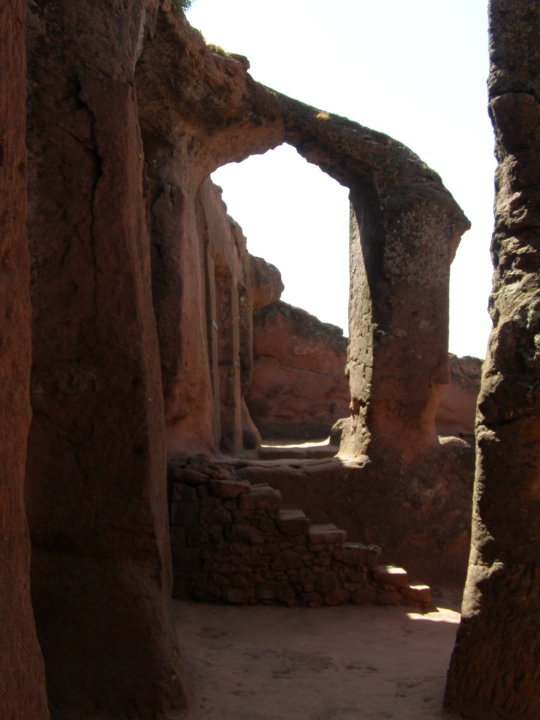

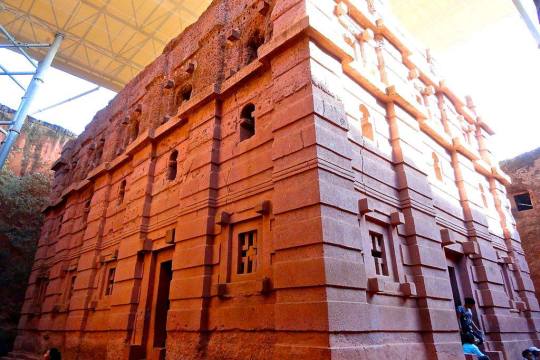


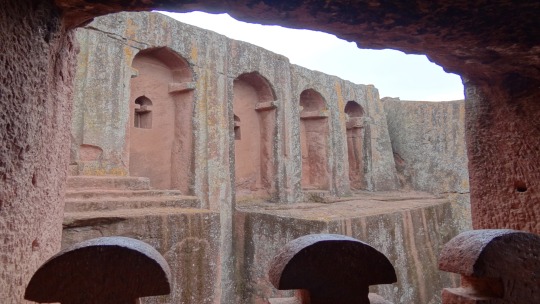

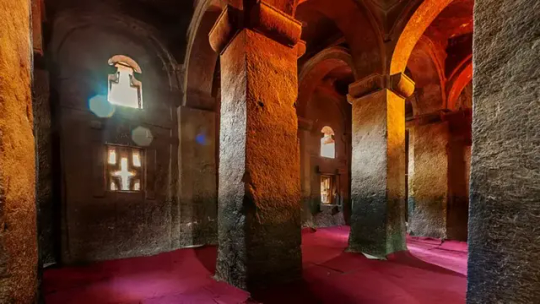


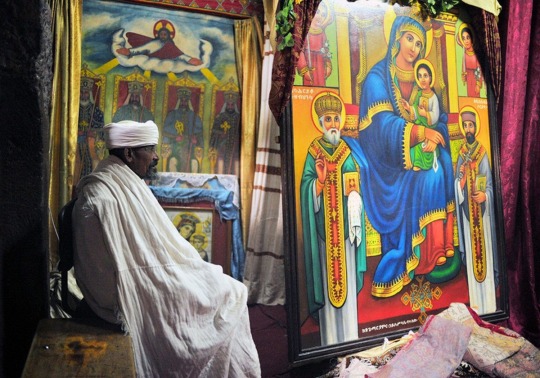
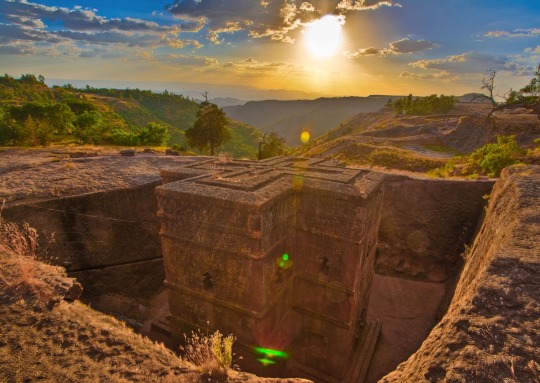

Скальные церкви Лалибэлы, Эфиопия.
Одной из главных достопримечательностей страны является город Лалибэла, бывший в течение долгих столетий религиозным центром и местом паломничества. Одиннадцать высеченных в красноватых скалах церквей Лалибэлы с XVI века возбужлают непреходящий интерес. Самый большой из них, храм Христа Спасителя (Бетэ Мэдхане Алем), достигает в длину 33,7 метра, в ширину 23,7 метра и в высоту 11,6 метра. Наиболее почитаемым из храмов является храм Девы Марии (Бетэ Марйам), где окна имеют форму римских и греческих крестов, свастик и плетеных крестов. Церковь стоит в большом дворе, который с невероятными усилиями был вырублен прямо в скале. Позднее в северной стене внутреннего двора была высечена церковь Креста (Бетэ Мэскэль). На противоположной стороне двора находится церковь Богородицы (Бетэ Дэнагыль), посвященная мукам Пресвятой Девы. Через тоннель-лабиринт можно пройти к другим скальным храмам, связанным с двором.
Церковь Святого Георгия (Бетэ Гийоргис), покровителя эфиопов, грузин и англичан, вырублена в виде крестообразной в плане башни с равными поперечинами креста. Она сначала была выбита как цельный блок в скале, потом ей придали форму греческого креста, и, наконец, выдолбили внутреннюю часть. Крыша церкви расположена на уровне поверхности земли, сама-же церковь стоит в глубокой яме, и к ней можно добраться только через тоннель.
Кстати, церкви – это и памятник инженерной мысли средневековой Эфиопии: близ многих из них расположены колодцы, которые наполняются с помощью сложной системы, основывающейся на использовании местных артезианских скважин (при этом город расположен на горном хребте на уровне 2500 метров над уровнем моря!).
Rock churches of Lalibela, Ethiopia.
One of the main attractions of the country is the city of Lalibela, which for many centuries was a religious center and a place of pilgrimage. Eleven churches of Lalibela, carved into the reddish rocks, have been of enduring interest since the 16th century. The largest of them, the Cathedral of Christ the Savior (Bete Medhane Alem), is 33.7 meters long, 23.7 meters wide and 11.6 meters high. The most revered of the temples is the Church of the Virgin Mary (Bete Maryam), where the windows are shaped like Roman and Greek crosses, swastikas and woven crosses. The church stands in a large courtyard, which was cut directly into the rock with incredible effort. Later, the Church of the Cross (Bete Meskel) was carved into the northern wall of the courtyard. On the opposite side of the courtyard is the Church of the Virgin Mary (Bete Denagyl), dedicated to the sufferings of the Blessed Virgin. Through a labyrinthine tunnel you can get to other rock temples connected to the courtyard.
The Church of St. George (Bete Giyorgis), the patron saint of Ethiopians, Georgians and the English, is carved out in the form of a cross-shaped tower with equal crossbars. It was first knocked out as a solid block in the rock, then it was given the shape of a Greek cross, and finally the inside was hollowed out. The roof of the church is located at ground level, the church itself is in a deep pit, and can only be reached through a tunnel.
By the way, the churches are also a monument to the engineering thought of medieval Ethiopia: near many of them there are wells that are filled with a complex system based on the use of local artesian wells (while the city is located on a mountain ridge at an altitude of 2500 meters above sea level!).
Источник:/tury.ru/sight/id/14007-skalnye-cerkvi-lalibely-14007,/iz.ru /898617/gallery/lalibela#,/putidorogi-nn.ru/100-chudes-sveta/28-skalnie-tserkvi-lalibeli,/art-links.livejournal.com/2396486.html.
176 notes
·
View notes
Text

Temple-Theater of Monte San Nicola, Casertano, Italy
Discovered accidentally by Nicolino Lombardi while flying in his ultralight helicopter, the Temple-Theater reveals a compelling story of historical intrigue dating back to the late Ancient Roman Republican period, possibly around the 2nd-1st century BC.
This remarkable archaeological site, hidden for centuries beneath overgrown vegetation, has sparked scholarly debate about whether the complex was built by Roman architects or indigenous Italic tribes like the Samnites.
Situated at an elevation of 410 meters in the scenic Sannio area, the presence of nearby tombs suggests that it fell out of use by the 2nd century AD. If the dating is accurate, the construction of the temple-theater coincided with Rome's victories over rivals such as Carthage and conflicts with local enemies.
Positioned strategically to overlook key northern routes, the complex likely represented Rome's growing power in the region.
Similar to the Samnite theater at Pietrabbondante, this structure symbolizes Rome's control over the Italian landscape, reflecting ancient rivalries and ambitions.
977 notes
·
View notes
Text
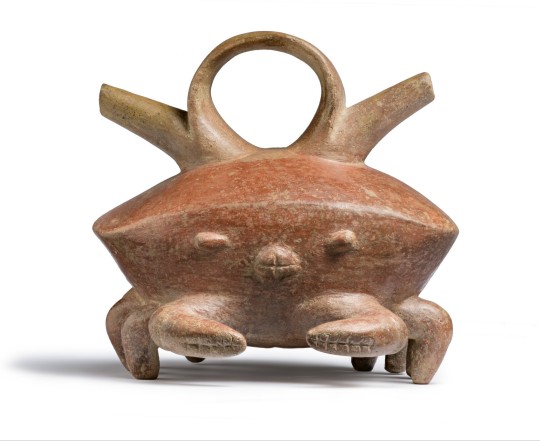
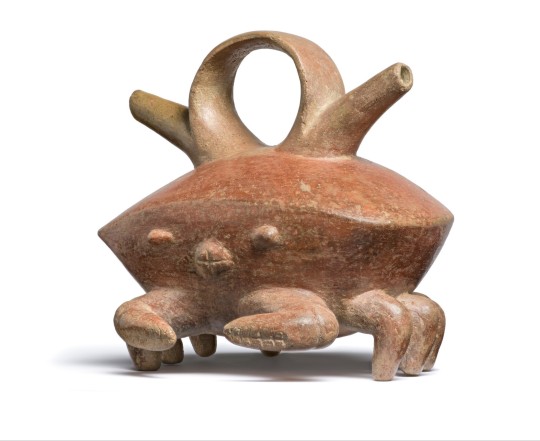
~ Crab Vessel with Double Spout.
Place of origin: Colombia, Calima Region
Period: Ilama Period
Date: 1500 B.C.-A.D. 100
Medium: Ceramics
25K notes
·
View notes
Text
Pompeii. New discoveries








A bird of prey stands out in the upper part of the lararium. The raptor, which can probably be identified as an eagle, holds a palm branch in its claws. In the lower part, the scene consists of two snakes facing each other which frame an altar with a fluted circular shaft on which offerings are placed. From the left, it is possible to distinguish the following features: a pine cone, a raised element that supports an egg, and what appear to be a fig and a date. The background of the scene is filled with two bushes with lanceolate leaves and red and yellow berries on which three sparrows move about. Several interesting finds were discovered inside the niche: ritual objects, left as part of a last offering before the eruption that destroyed Pompeii in AD 79: an incense burner in achromatic clay with missing pieces dating from antiquity and a lamp, both displaying clear signs of burning. Laboratory analyses have made it possible to identify the remains of twigs of aromatic plants, while two parts of a dried fig were found behind the two objects. Two strips of coloured marble were discovered on the flat top of the altar together with a third element, presumably made of red marble, with the depiction of a face ascribable to the Dionysian world, probably a Silenus.
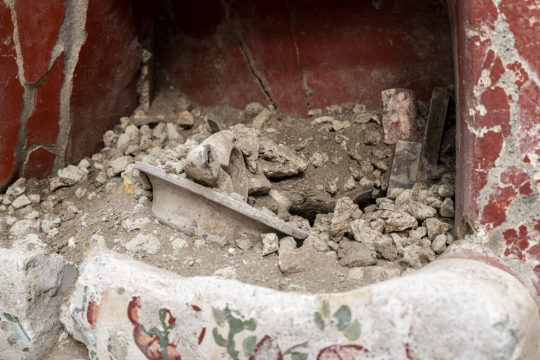

Text from the article by pompeiisites.org (October 2024) Photos provided by pompeiisites.org
3K notes
·
View notes
Photo

A PDP-8 computer used for calculating missile trajectory aboard the USS Oklahoma City.
417 notes
·
View notes
Photo

Petersham, Maud, 1890-1971. Why not books? United States? : publisher not identified, between 1920 and 1930?
Poster READ .W49 E15
901 notes
·
View notes
Text

The neon sign in front of the old Vernor's plant in Detroit.
31 notes
·
View notes



